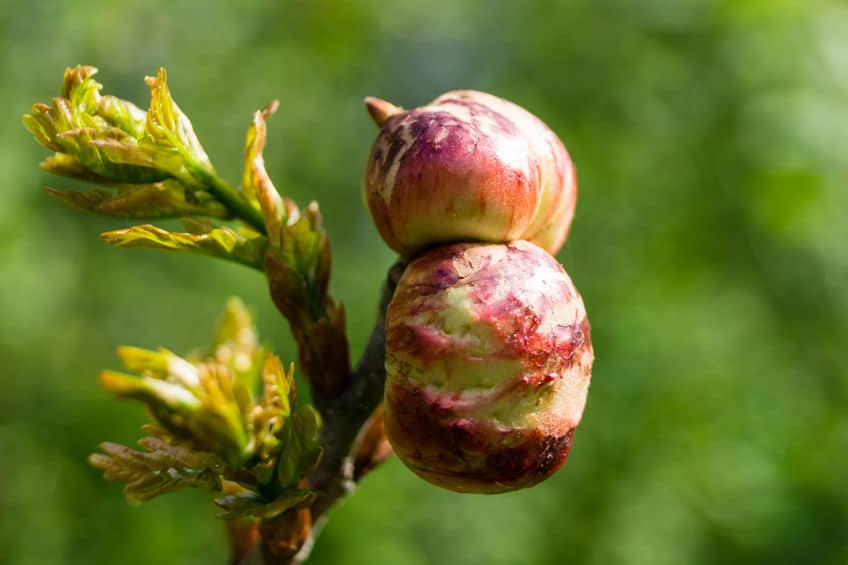You may have wondered if wasps are more beneficial or harmful to plants.
Most wasps offer benefits to plants as important pollinators and will prey on plant-eating insects such as aphids and caterpillars. Some wasps, however, such as gall wasps are parasites to plants. They inject their eggs into plants that result in galls. Other wasps will also strip bark from trees to produce nests and to feed on tree sap.
let’s take a closer look at ways that wasps can benefit and harm plants.
What is a gall wasp?
Gall wasps are not true wasps but are part of the wider wasp family. They are very small in size ranging from as small as 1mm up to 8 mm. Their size means that their stings can not penetrate human skin. They are parasites to plants.
How do gall wasps affect plants?
Insect galls on plants caused by gall wasps is a swelling growth on the external tissues of plants. The plant tissue becomes controlled by the gall wasp. The gall wasp injects its eggs into a plant and a chemical creates the gall. The larvae will develop inside the gall until fully developed when they emerge as fully formed gall wasps.
The galls provide protection for the developing larvae from predators. The larvae feed on the nutrition provided by the plant. While most plants can withstand galls with little impact they certainly do plants no good.

Does bark stripping by wasps harm plants?
Most social wasps will make their nests from paper. They will scrape bark from trees, chew it, and then use the pulp for their intricate nests. Larger wasps can result in significant damage to trees as the number of wasps in these colonies can number up to 5000.
The wasps will also feed off the the tree sap which is high in carbohydrates and so attractive to wasps.
Wasps as pollinators
Wasps primarily feed on carbohydrates such as nectar and traveling from flower to flower will pollinate plants, just as bees do. Some plants are wholly dependent on wasps for their pollination. These include fig trees that have a symbiotic relationship with fig wasps. The fig wasps will insert their eggs into figs, but by doing so also pollinate the fig. See this article.
In addition to figs, other plants such as hogweed, ivy, (Source: Richard jones), and helleborine orchids are predominately pollinated by wasps. Helleborine orchids actively attract wasps by releasing scents that wasps associate with food. The nectar on these plants have evolved to make the wasps drowsy and so make them spend more time on the plant so making them far more efficient pollinators for the plant.
Wasps as pest controllers
While gall wasp larvae survive on nutrients from plants most wasp larvae are carnivorous and need protein from other insects to survive. See this article. As a result, wasps act as excellent insect predators. It is estimated that a colony that produces over 10,000 wasps over a season will collect up to 4000 insects a day as food. (Source: Richard Jones)
Often this can be extremely beneficial to plants. Some plants even release a chemical that actually attracts wasps. When a caterpillar starts to eat a plant it will release a chemical that acts as a call for help. The wasp will be attracted to the chemical as it associates it with a source of food. The wasp will then remove the insect that was eating the plant.
In parts of South America, wasp nests are even moved to surround crops to act as natural pest controllers.
